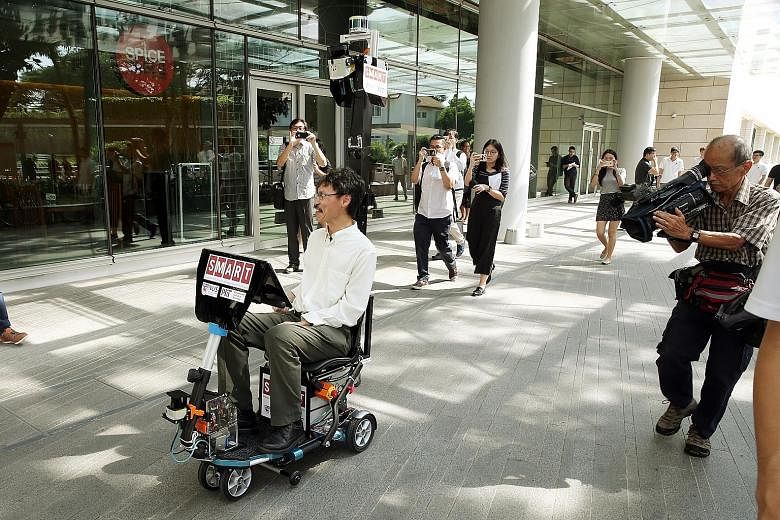Researchers here have crunched the technology from self-driving cars to fit it into a device just 1m long and half a metre wide.
The Singapore-MIT Alliance for Research and Technology (Smart) harnessed previously developed software for driverless cars and buggies for use in a mobility scooter.
The device was unveiled yesterday at the National University of Singapore's (NUS) University Town, where it is being tested. The scooter, weighing about 50kg with a top speed of 6kmh, took two months to be developed by a team of four.
The obstacle to getting it out and about, however, could be cost. It will set a user back $15,000 to retrofit an existing mobility scooter to make it self-driving, said Smart co-principal investigator Marcelo Ang.
But he expects that amount to drop to as little as a few "hundreds of dollars" in the next few years, as self-driving technology advances.
Smart currently has only one scooter, he said, but is in discussions with ST Engineering to use the technology in more devices.
Dr Ang, who is also acting director of the Advanced Robotics Centre in NUS, said several organisations such as town councils and shopping centres have also expressed interest in the device.
About the size of a wheelchair, mobility scooters are three- or four-wheeled electric vehicles used primarily by the elderly and those with disabilities to get around.
Dr Ang said the device could be more useful than conventional mobility scooters for those who are unable to react quickly to obstacles.
Mr Warren Chew, managing director of mobility scooter distributor Falcon Mobility, said that while self-driving mobility scooters could be of use to those with conditions such as dementia, it remains to be seen how safe they are.
"Autonomous cars still get into accidents," noted Mr Chew.
Dr Ang envisions that the scooter could also cater to what he termed "last last-mile" journeys.
"It can provide seamless travel: You can book it to take you from your doorstep to a pick-up point, where you can take a driverless car to a train station," he said.
Watch how a self-driving mobility scooter works. http://str.sg/4Mpk


